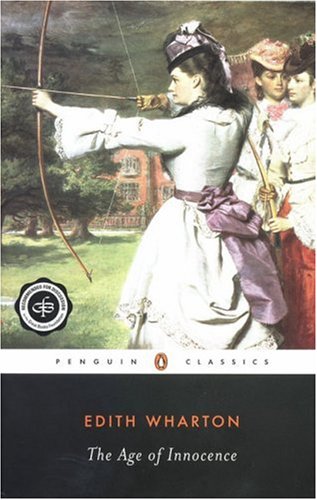
THE AGE OF INNOCENCE
The return of the beautiful Countess Olenska into the rigidly conventional society of New York sends reverberations throughout the upper reaches of society.
Newland Archer, an eligible young man of the establishment is about to announce his engagement to May Welland, a pretty ingénue, when May’s cousin, Countess Olenska, is introduced into their circle. The Countess brings with her an aura of European sophistication and a hint of scandal, having left her husband and claimed her independence.
Her sorrowful eyes, her tragic worldliness and her air of unapproachability attract the sensitive Newland and, almost against their will,
The return of the beautiful Countess Olenska into the rigidly conventional society of New York sends reverberations throughout the upper reaches of society.
Newland Archer, an eligible young man of the establishment is about to announce his engagement to May Welland, a pretty ingénue, when May’s cousin, Countess Olenska, is introduced into their circle. The Countess brings with her an aura of European sophistication and a hint of scandal, having left her husband and claimed her independence.
Her sorrowful eyes, her tragic worldliness and her air of unapproachability attract the sensitive Newland and, almost against their will, a passionate bond develops between them. But Archer’s life has no place for passion and, with society on the side of May and all she stands for, he finds himself drawn into a bitter conflict between love and duty.
- Penguin Classics
- Paperback
- March 1996
- 368 Pages
- 9780140189704
About Edith Wharton
Edith Wharton was born Edith Newbold Jones on January 24, 1862, during the American Civil War. Wharton published her first short story in 1891; her first story collection, The Greater Inclination, in 1899; a novella called The Touchstone in 1900; and her first novel, a historical romance called The Valley of Decision, in 1902. The book that made Wharton famous was The House of Mirth, published in 1905. She died in 1937.
Praise
"Edith Wharton is a writer who brings glory on the name of America, and this is her best book. It is one of the best novels of the twentieth century . . . a permanent addition to literature."—The New York Times
Discussion Questions
Why does Archer neglect to tell Countess Olenska of his engagement to May Welland, despite the fact that May has instructed him to do so?
Why does Archer suddenly realize that marriage is “not the safe anchorage he had been taught to think, but a voyage on uncharted seas”? (p. 35)
Why does Archer feel “oppressed” when contemplating the “factitious purity” of his betrothed? (p. 37)
Why is Countess Olenska a threat to the social order that claims Archer as one of its kind?
Why is the neighborhood where Countess Olenska resides a “queer quarter for such a beauty to settle in”? (p. 99)
To what is Archer referring when he thinks about his peers that “over many of them the green mould of the perfunctory was already perceptibly spreading”? (p. 103)
What does Archer mean when he thinks that “it was wonderful that…such depths of feeling could coexist with such absence of imagination”? (p. 154)
How does Archer feel about May’s talent with her bow and arrow? Why does he so often feel “cheated…into momentary well-being”? (p. 173)
When Archer, at the request of Mrs. Mingott, follows the path to the shore to fetch Countess Olenska, why does he say to himself, “If she doesn’t turn before that sail crosses the Lime Rock light I’ll go back”? (p. 177)
What kind of “code” exists between Archer and May? How does it work? What is its origin? (p. 219)
Why does May decide to host the farewell dinner for the Countess Olenska? Why does Archer think of the dinner guests as “a band of dumb conspirators”? (p. 276)
Why does Archer walk away from a potential reunion with Countess Olenska?
